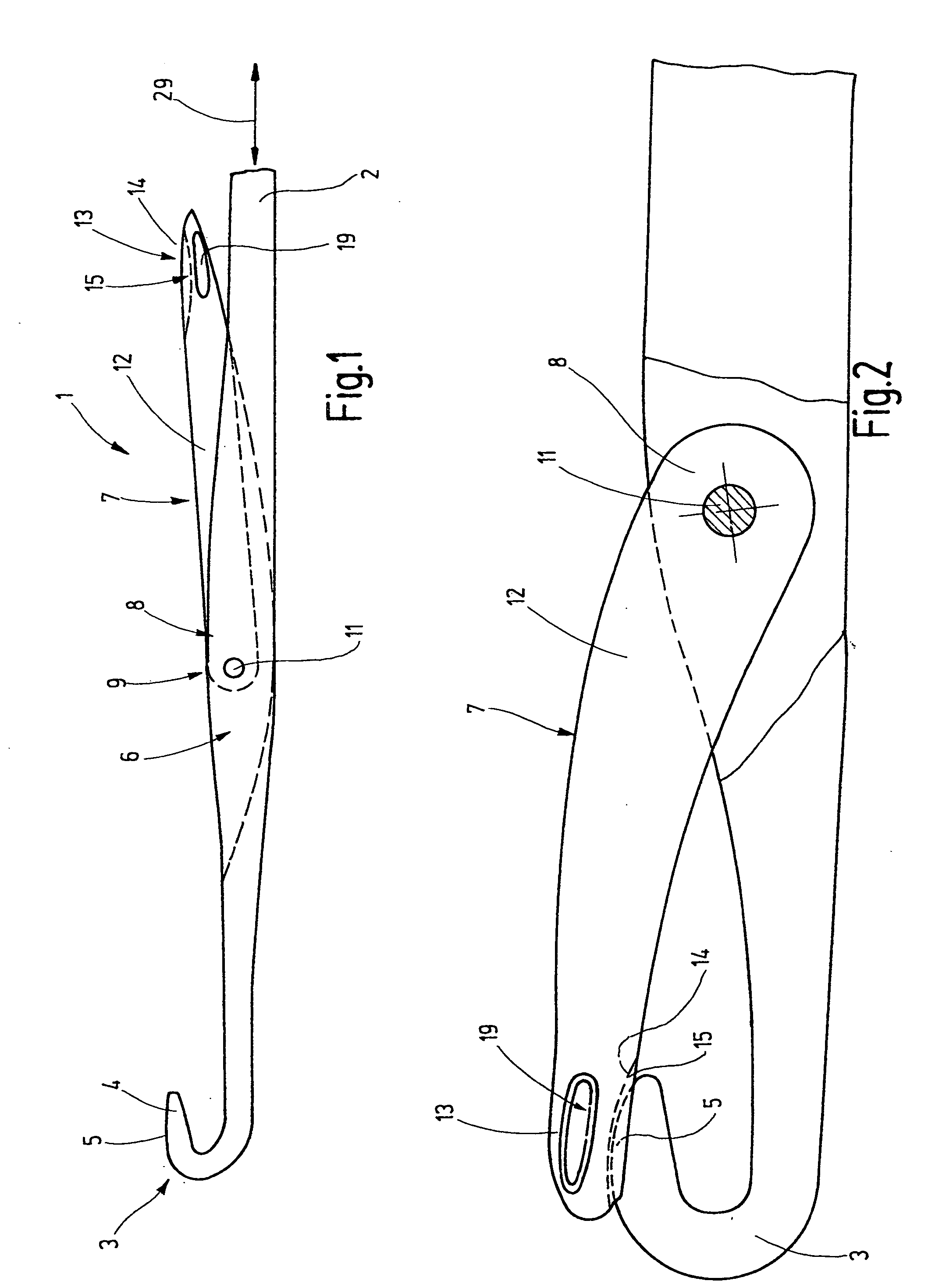Latch needle for a loop-forming textile machine
a technology of textile machine and latch, which is applied in the field of latch needle for loop-forming textile machine, can solve the problems of narrow limits set to the elastic spreading open of the latch cheek, the weight of the needle latch itself, and the breakage of the latch shank, so as to reduce the total weight of the latch, reduce the moment of inertia, and reduce the effect of the latch
- Summary
- Abstract
- Description
- Claims
- Application Information
AI Technical Summary
Benefits of technology
Problems solved by technology
Method used
Image
Examples
Embodiment Construction
[0022] In FIG. 1, a latch needle 1 is shown, which has a needle body 2 with a hook embodied on its end. The hook 3 is provided with a tip 4, which may be rounded on its top side 5.
[0023] Not far away from the hook 3 in the needle body 2, a latch slot 6 is provided, into which a latch protrudes by one end 8. The latch is held and pivotably supported in the latch slot 6 on a bearing device 9. The bearing device 9 is preferably formed for example by a one-piece or multi-piece pin 11 passing transversely through the latch slot 6. The latch 7 can be pivoted about this pin 11 out of the standing position shown in FIG. 1 into the closing position shown in FIG. 2.
[0024] The latch has a narrow shank 12, which is preferably defined by parallel flanks and whose width is slightly less than that of the latch slot 6. The length of the latch 7 is dimensioned such that with its end 13 it can reach the top side 5 of the hook 3. The end 13, on the side toward the hook 3, is provided with a shaped f...
PUM
 Login to View More
Login to View More Abstract
Description
Claims
Application Information
 Login to View More
Login to View More - R&D
- Intellectual Property
- Life Sciences
- Materials
- Tech Scout
- Unparalleled Data Quality
- Higher Quality Content
- 60% Fewer Hallucinations
Browse by: Latest US Patents, China's latest patents, Technical Efficacy Thesaurus, Application Domain, Technology Topic, Popular Technical Reports.
© 2025 PatSnap. All rights reserved.Legal|Privacy policy|Modern Slavery Act Transparency Statement|Sitemap|About US| Contact US: help@patsnap.com



